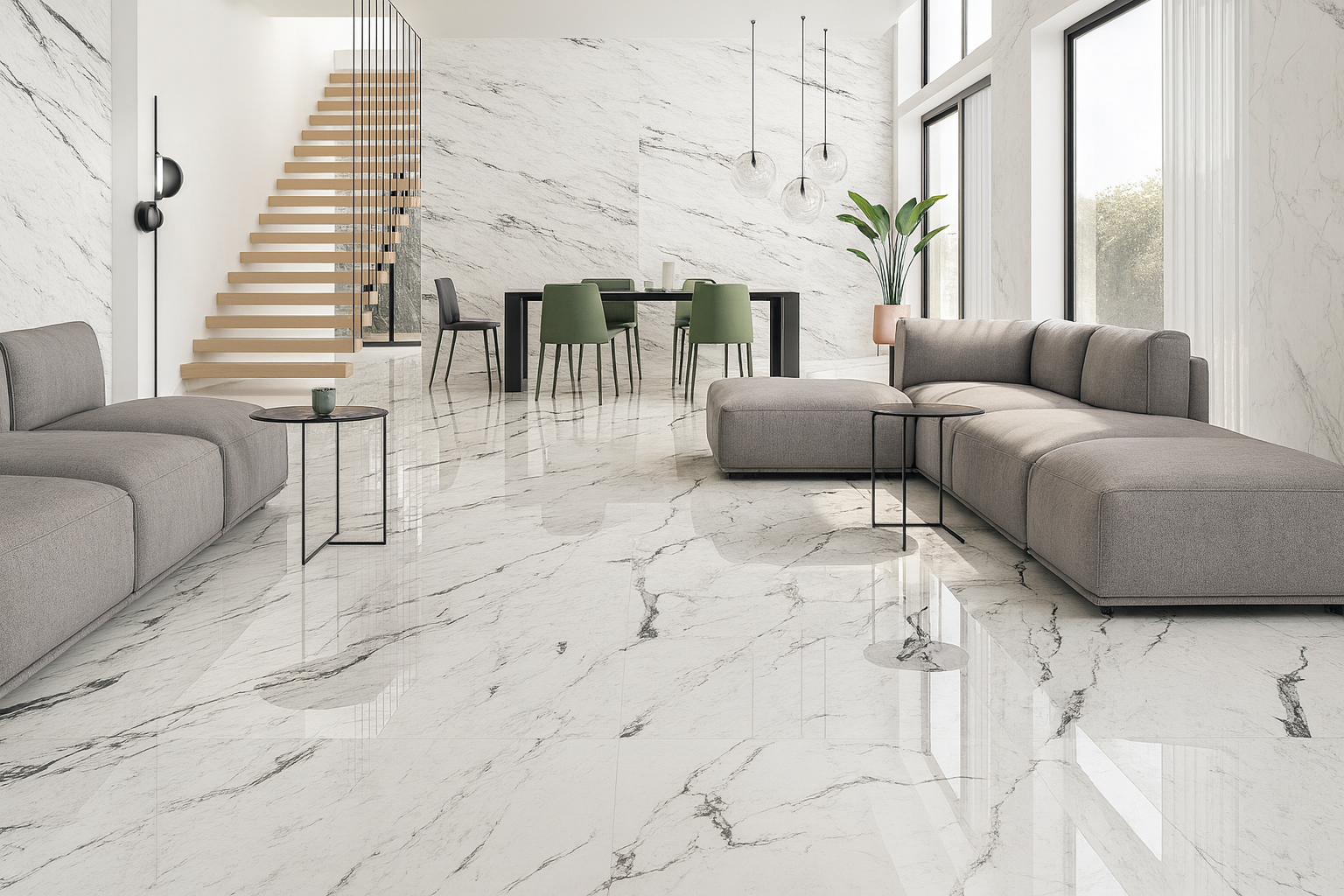Tile Design
Tile design refers to the artistic patterns, colors, textures, shapes, and styles used in tiles to enhance visual appeal and functionality in a variety of spaces. Tile design plays a key role in the aesthetic quality of floors, walls, and decorative surfaces, offering endless possibilities for customization in residential, commercial, and industrial environments.
Elements of Tile Design:
Pattern:
Tile patterns vary widely, from classic arrangements like herringbone, basketweave, and chevron to more intricate designs such as mosaics and geometric patterns. Patterns can be created by arranging tiles in specific ways or by using tiles that have designs printed directly onto their surface.
Color:
Tile colors range from neutrals (white, beige, gray) to bold hues (blues, greens, reds) and even metallic finishes. Choosing the right color enhances the mood of a space, with lighter colors often creating an open feel and darker shades adding depth and warmth.
Texture:
Textured tiles include options such as matte, gloss, satin, and raised designs, adding visual and tactile interest. Textures can mimic natural materials like stone or wood or have a unique, handcrafted appearance, adding depth and dimension to surfaces.
Shape:
Traditional tiles are square or rectangular, but modern designs include hexagons, triangles, arabesques, circles, and custom shapes. Unique shapes can create a dynamic look, often serving as focal points in a room.
Size:
Tile sizes range from small mosaic tiles to large-format tiles. Smaller tiles are often used in intricate patterns or mosaics, while larger tiles create a seamless and spacious look, often requiring fewer grout lines.
Popular Tile Design Styles:
Classic and Traditional:
Classic designs often include neutral colors, simple patterns, and timeless materials like ceramic and marble. Subway tiles and checkerboard patterns are popular in traditional settings.
Modern and Minimalist:
Modern tile designs emphasize clean lines, solid colors, and smooth finishes, often in shades of white, black, and gray. Large-format tiles with minimal grout lines contribute to a sleek, uncluttered appearance.
Rustic and Natural:
Rustic designs use tiles that mimic natural materials, such as wood-look or stone-look tiles, often with textured finishes that evoke a handcrafted feel. Earthy colors and natural textures are common in this style.
Mediterranean and Moroccan:
Mediterranean and Moroccan tile designs feature vibrant colors, intricate geometric patterns, and ornate details. These designs are often used as decorative elements on walls, floors, and backsplashes to add color and artistry.
Industrial:
Industrial tile designs often feature concrete or metallic finishes and darker shades like charcoal, black, and gray. Textured surfaces and weathered looks add character, complementing the raw, unfinished aesthetic of industrial spaces.
Vintage and Retro:
Vintage designs incorporate patterned tiles, checkerboards, and pastel colors reminiscent of earlier eras. Retro tiles often include patterns like polka dots, floral motifs, and geometric shapes.
Eco-Friendly and Sustainable:
Eco-conscious designs prioritize sustainable materials such as recycled glass or reclaimed stone, as well as neutral colors and natural textures that promote a green and natural aesthetic.
Tile Design Applications:
Flooring:
Tile designs for flooring vary based on the style of the space. Large-format, stone-look, or wood-look tiles are popular for a seamless and elegant look, while mosaic and patterned tiles can create dynamic accents.
Walls and Backsplashes:
Wall tiles often include glossy, high-color tiles in kitchen backsplashes or bathrooms. Patterns and textures like subway tiles or intricate mosaics add a decorative element that complements other design features.
Feature Walls:
Accent walls with decorative tiles, such as bold geometric patterns, Moroccan tiles, or textured finishes, can serve as a focal point, drawing attention to a specific area within a room.
Outdoor Spaces:
Tiles designed for outdoor use are typically durable, slip-resistant, and available in earthy tones. Porcelain, natural stone, and textured tiles are commonly used for patios, pathways, and pool areas.
Commercial Spaces:
Tile designs in commercial settings, such as hotels, restaurants, and offices, are often chosen for durability and easy maintenance. Large-format and textured tiles add sophistication, while bold colors and patterns make statements in lobbies and entrances.
Benefits of Innovative Tile Design:
Customizability:
Tile design offers high customizability, allowing designers to tailor patterns, colors, and textures to specific aesthetic goals, whether for modern minimalism or intricate artistry.
Durability with Style:
Tiles maintain their aesthetic appeal and resilience over time, making them a durable choice for high-traffic areas.
Improved Ambiance:
The right tile design can elevate the ambiance of a space, providing a sense of luxury, comfort, or artistic flair depending on the design.
Enhanced Property Value:
Unique or high-quality tile designs can add to the aesthetic and functional value of a property, appealing to potential buyers and occupants.
